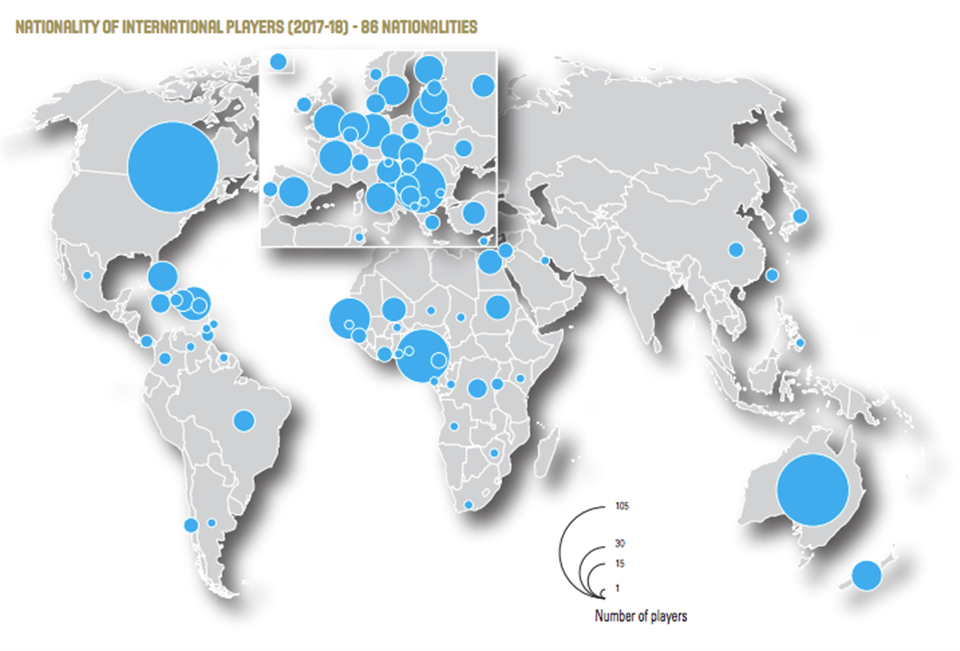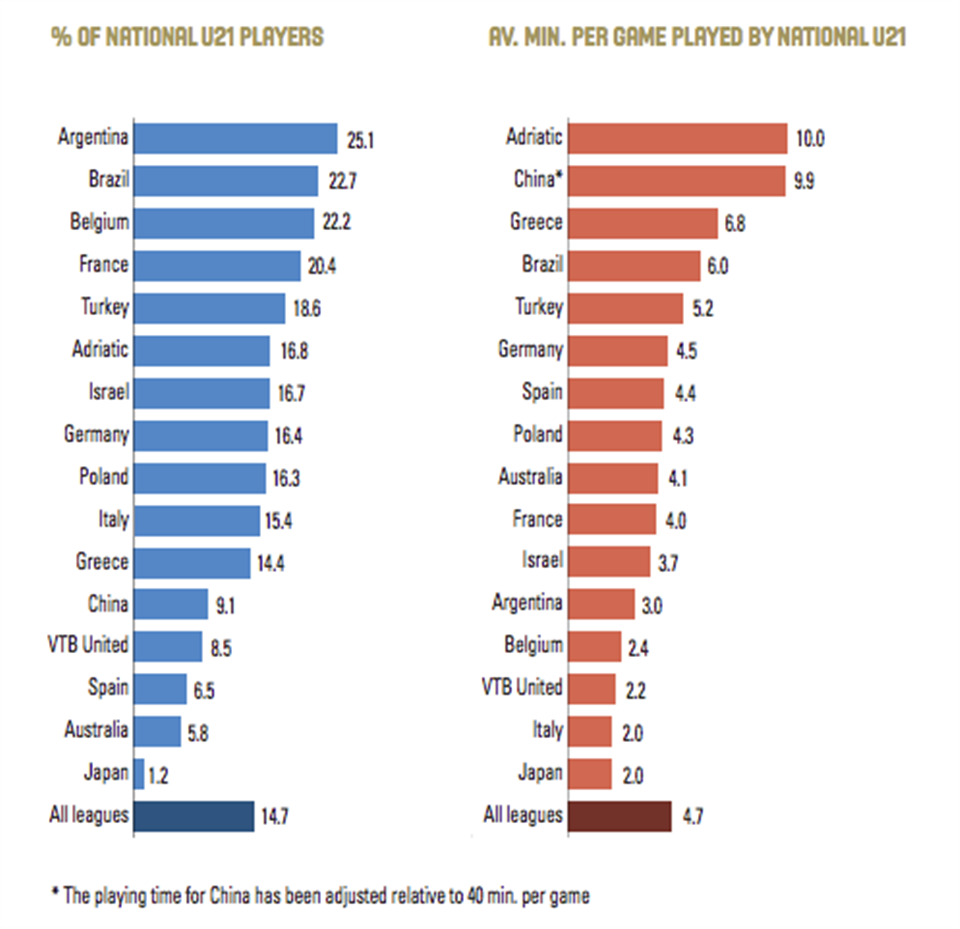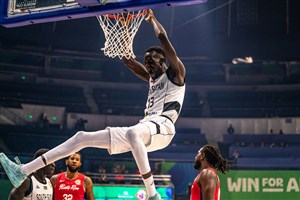
Study shows world needs work in keeping youngsters at home
REGENSBURG (David Hein's Eye on the Future) - A record number of international players attended colleges and universities in the United States in 2017-18, showing that the rest of the world still needs to do more work in offering their youngsters a reason to stay home.
A study collaborated between the CIES Sports Observatory and FIBA looking at last season showed that 640 internationals from 86 countries played collegiately in the United States. Four of the five FIBA regions all saw record numbers of youngsters head to the States, according to the International Basketball Migration Report 2018.
The International Centre for Sports Studies (CIES) and @FIBA have issued the seventh edition of the International Basketball Migration Report (IBMR), a seasonal insight into the migratory trends and tendencies of the sport.https://t.co/81htGmExQu
— FIBA media (@FIBA_media) October 10, 2018
The seventh edition of the annual report said 270 men's players from Europe were in the US last season, a new high mark topping the previous record of 221 from 2014-15. The Americas lost 169 players to US institutions, also a new top figure besting the 150 from 2012-13. Seventy-nine players left Oceania - up from the previous top clip of 62 from 2012-13; while the US collegiate system had 10 players from Asia - one more than the nine players in 2016-17. Only Africa did not set a new record, though the 112 players from the continent is just two fewer than the 114 from 2014-15.
Europe witnessed a major jump from the previous season as 182 Europeans were in US colleges and universities in 2016-17. That represents a 48 percent increase after two straight years of declining numbers for Europe - from 221 in 2014-15 to 182 in 2016-17 or a 17 percent decrease over the two years.
 A look at the nationalities of the international players in colleges and universities in the United States.
A look at the nationalities of the international players in colleges and universities in the United States.
The Americas had a 56 percent increase from 2016-17 while Africa jumped 32 percent and Oceania was up 32 percent as well. The Americas had been on a four-year decline while Africa’s numbers were down the previous two seasons, and Oceania’s marks had been stable between 62 and 57 from 2012-13 to 2016-17.
 A FIBA zone breakdown on the number of international players in the NCAA in the United States.
A FIBA zone breakdown on the number of international players in the NCAA in the United States.
The reason for the increase was clear for the CIES Sports Observatory.
"The high number of foreign players used by non-American teams (particularly European ones) limits the minutes given to U21 national team players at First Division level," the migration report stated. "As a result of this, a high number of talented players go for the option of getting educational opportunities while playing."
The CIES Sports Observatory is a research group within the International Centre for Sports Studies (CIES), an independent foundation located in the Swiss city of Neuchatel. Its aim is to serve sports governing bodies through national and international statistical analysis in surveys, databases, data mining and sport business intelligence.
The migration report did not just study international players in the NCAA but also analyzed 16 leagues around the world: Europe's Adriatic ABA league, Argentina's Liga A, Australia/New Zealand's NBL, the Belgian EuroMillions Basketball League, China's CBA, LNB of France, BBL of Germany, Greece's Basket League, Japan's B.League, Lega A of Italy, Brazil's NBB, Poland's Energa Basket Liga, Spain's ACB, Turkey's Super Ligi and the European VTB United league. The migration report's analysis focused on three main points: a comparison between national players and foreigners, U21 players and the turnover of players in addition to the origin of imported players and a comparison of their profile with that of national players.
THE HIGH NUMBER OF FOREIGN PLAYERS USED BY NON-AMERICAN TEAMS (PARTICULARLY EUROPEAN ONES) LIMITS THE MINUTES GIVEN TO U21 NATIONAL TEAM PLAYERS AT FIRST DIVISION LEVEL. AS A RESULT OF THIS, A HIGH NUMBER OF TALENTED PLAYERS GO FOR THE OPTION OF GETTING EDUCATIONAL OPPORTUNITIES WHILE PLAYING.
Looking at the report's review of national U21 players offers a glimpse at why many young players are deciding to leave their homelands and head to college in the United States. The Adriatic league is the only one in which the average minutes per game played by national U21 players was in double figures at 10.0. The average of all leagues was 4.7 minutes with only China (9.9), Greece (6.8), Brazil (6.0) and Turkey (5.2) also averaging above 5.0 average minutes played.
That is also because there are not high numbers of national U21 players on the teams. Argentina was the only country above one-quarter at 25.1 percent, followed by Brazil (22.7 percent) and Belgium (22.2). China, VTB United, Spain, Australia and Japan were all in single digit percentage and the average of all leagues was 14.7 percent of the players being U21 nationals.

There were a couple of bright spots as German club Alba Berlin had the third-lowest average age of their players at 22.7 years and a ninth-highest percentage of national U21 players at 35.3. Polish side Asseco Gdynia was fourth-youngest at 23.0 years with an international-best 46.9 percent of national U21 players while Telenet Giants Antwerp of Belgium were fifth-youngest at 23.3 years and were even with Alba Berlin with 35.3 percent national U21 players.
While those three clubs are exemplary in their usage of young players, much of Europe and the rest of the world still has work to do to show their young players that they have a chance in their domestic league and should not jump to the United States to play in college there. And the leaders of many leagues around the world - in collaboration with their respective national federations - are trying to come up with solutions.
One solution could be something similar to what the Basketball Champions League has instituted with a new Home Grown Player rule, designed to force clubs to register a minimum number of players registered with their respective national federations for at least three seasons between the age of 12 and 20. The BCL's goal is to help encourage the development of more young local talents.
Whether efforts like this will work in helping keep local players in the domestic leagues remains to be seen. We will have to wait at least until the CIES Sports Observatory’s International Basketball Migration Report 2019.
David Hein
FIBA
FIBA's columnists write on a wide range of topics relating to basketball that are of interest to them. The opinions they express are their own and in no way reflect those of FIBA.
FIBA takes no responsibility and gives no guarantees, warranties or representations, implied or otherwise, for the content or accuracy of the content and opinion expressed in the above article.

















